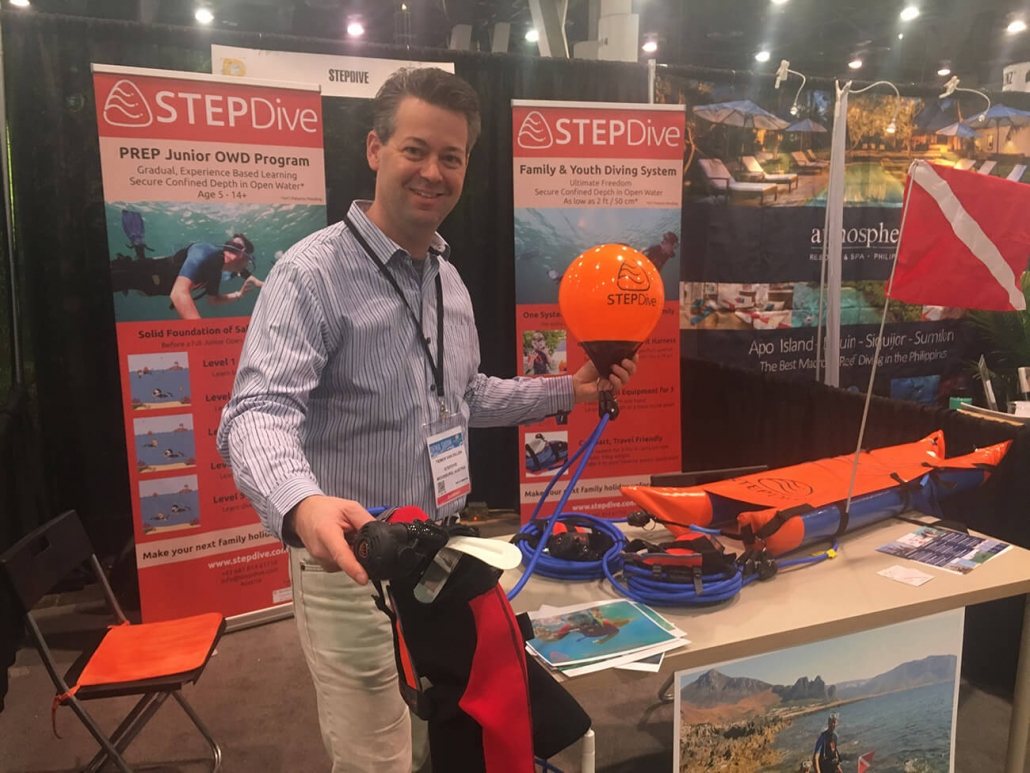STEPDive: A new discovery experience
Learning to dive is a thrilling yet somewhat daunting experience. After all, resisting our basic survival instincts to complete entry-level skills such as breathing underwater, mask removal/replacement and basic buoyancy can be quite challenging.
Predicting whether or not student’s will conquer initial fears or even enjoy diving thereafter is difficult, and often part of the reason for them not committing to a full scuba course. Of course, time, money or perceived complexity of the equipment also play a factor. But all of this can change!
Imagine not having to complete so much pre-dive theory or wear such heavy equipment. You simply strap on a harness and go snorkelling – but with a SCUBA regulator! Almost the same experience is offered, but without the complexities, weight or stress and in a completely safe and secure environment. Perfect right?
Depending on the dive center and surrounding water conditions, STEPDive can be offered in many cases as an excellent intermediary program; especially for families who want a shared underwater experience. With STEPDive’s unique and patent pending Variable Depth Control, instructors and students can have full confidence knowing that:
- Everyone begins on the surface and as divers grow in confidence, can progressively go deeper;
- Divers practice the same introductory dive skills (signals, breathing rules, equalisation techniques, regulator and mask clearing, etc);
- Students are depth limited (STEPDive is fully adjustable between 0 – 5m); and
- Even students younger than 8 can give it a try (but only at the surface – see Children and Diving: Are they ready? for more information).
So whether you’re a potential diver wishing to make an informed decision about a full certification course, or a business owner who is keen to streamline their shop’s discover experience, see how STEPDive could work for you.
See you underwater!
:: Darren






